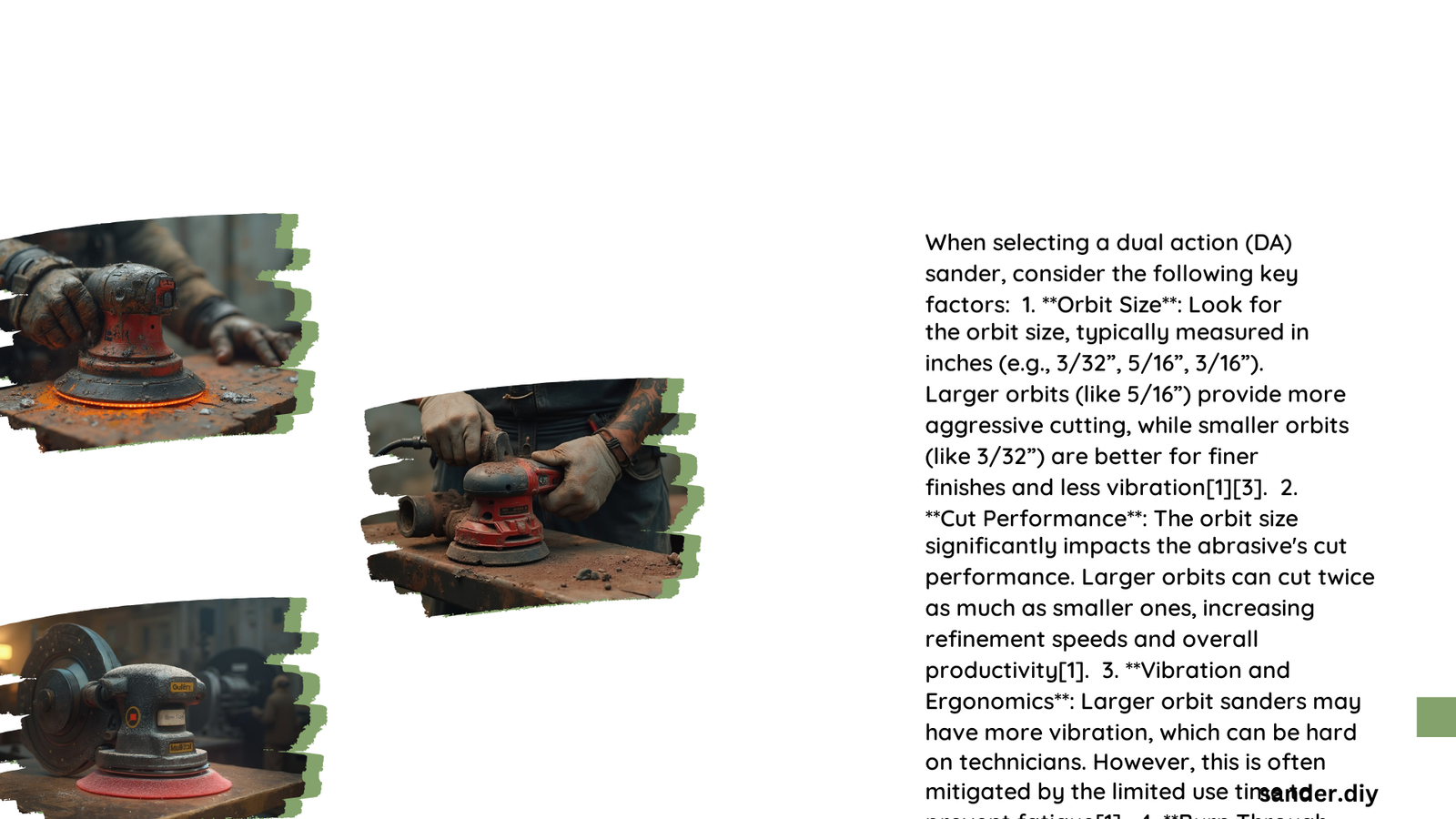When choosing a dual action sander, consider key factors such as orbital speed settings, pad size compatibility, dust collection efficiency, and motor power rating. These features significantly impact the sander’s performance, versatility, and user experience. Understanding these aspects helps in selecting the right tool for various sanding tasks, from woodworking to metal finishing. This guide explores crucial elements to consider when purchasing a dual action sander.
What Are the Key Factors to Consider in a Dual Action Sander?
- Orbital Speed Settings
- Pad Size Compatibility
- Dust Collection Efficiency
- Motor Power Rating
How Do Orbital Speed Settings Affect Sanding Performance?

Orbital speed settings play a crucial role in the performance of a dual action sander. Here’s what you need to know:
- Speed Range: Most dual action sanders offer speeds between 4,000 to 10,000 RPM.
- Material-Specific Settings:
- For wood: Medium to high speeds (around 10,000 RPM) are ideal for smooth finishes.
- For delicate materials: Lower speeds (8,000 to 12,000 RPM) prevent over-aggressive sanding.
- For metal: Higher speeds for material removal, lower speeds for fine finishing.
Impact on Sanding Quality:
| Speed Setting | Best For | Caution |
|---|---|---|
| High (10,000 RPM) | General woodworking, fast material removal | May cause swirls on delicate surfaces |
| Medium (8,000 RPM) | Balanced material removal and finish | Less aggressive, may take longer |
| Low (4,000-6,000 RPM) | Delicate materials, fine finishing | Slower material removal |
What Pad Sizes Are Most Effective for Different Projects?
Pad size compatibility is a crucial factor in choosing a dual action sander. The two most common sizes are:
- 5-inch Pads:
- Ideal for versatility and maneuverability
- Suitable for smaller to medium-sized projects
-
Offers better control in tight spaces
-
6-inch Pads:
- Provides larger coverage area
- More efficient for larger surfaces
- Slightly less maneuverable than 5-inch pads
Choosing the Right Pad Size:
- For detailed work and smaller areas: 5-inch pads
- For larger projects and open surfaces: 6-inch pads
- Consider the balance between efficiency and control based on your typical projects
Why Is Dust Collection Efficiency Important in a Dual Action Sander?
Effective dust collection is crucial for both health and workspace cleanliness. Here’s what to look for:
- Built-in Systems: Some sanders feature internal dust collection mechanisms.
- Pros: Integrated design, no need for external attachments
-
Cons: May be less efficient than external systems
-
External Dust Collection: Options include dust bags or vacuum attachments.
- Pros: Can capture up to 90% or more of dust, more effective cleaning
- Cons: May require additional equipment or setup
Benefits of Efficient Dust Collection:
- Reduced health risks from airborne particles
- Cleaner work environment
- Improved visibility of the work surface during sanding
- Less time spent on post-sanding cleanup
How Does Motor Power Rating Influence Sander Performance?
The motor power rating, typically measured in amps (A), is a key indicator of a sander’s capabilities:
- Higher Power Ratings (e.g., 5A):
- Better for tough materials and aggressive sanding
- Longer lifespan and durability
-
May generate more heat and require more maintenance
-
Lower Power Ratings (e.g., 2.5A):
- Suitable for lighter tasks and fine finishing
- Generally more compact and easier to handle
- May struggle with heavy-duty tasks
Choosing the Right Power Rating:
| Power Rating | Best For | Considerations |
|---|---|---|
| High (4-5A) | Heavy-duty tasks, professional use | Higher cost, more weight |
| Medium (3-4A) | General-purpose, DIY projects | Balanced performance and cost |
| Low (2-3A) | Light tasks, occasional use | More affordable, less versatile |
When selecting a dual action sander, carefully consider these factors to ensure you choose a tool that meets your specific needs and project requirements. The right combination of orbital speed settings, pad size, dust collection efficiency, and motor power will result in a versatile and effective sander for your workshop.
